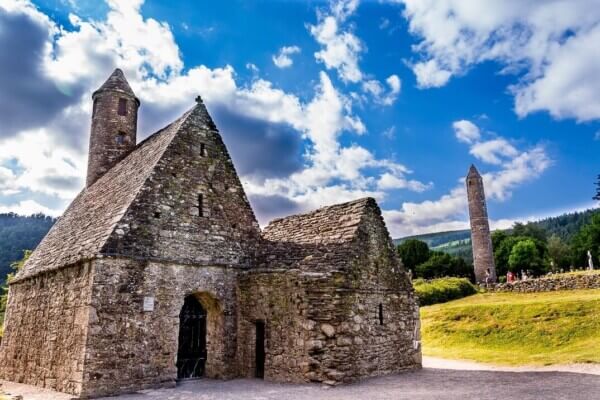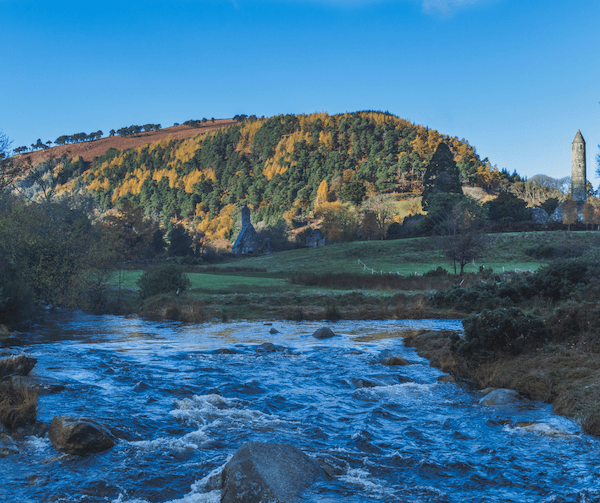At The National Museum of Ireland in Dublin, a popular exhibition featuring artifacts from the Glendalough Monastery in Co. Wicklow provides incredible insight into the lives of both humble and powerful pilgrims who traveled to this holy site.
This news item and page contain affiliate links and I may earn compensation when you click on the links at no additional cost to you.
Twenty-six objects that have never been shown to the public before are all part of an exhibition titled, “Glendalough: Power, Prayer and Pilgrimage.”
The National Museum of Ireland is among several free museums you can visit in Dublin.
The artifacts include a 10th-century woman’s leather shoe lost in a nearby bog, the decorated pin of an 11th-century bishop, as well as a number of Viking coins.

The objects are from a time period spanning about 1,200 years.
“Researching these objects brings rich insights into the lives of both the humble and powerful who traveled as pilgrims or who lived at Glendalough,” said the museum’s curators.

Some of the items were chance discoveries by local people who literally stumbled upon them.
Others were discovered as part of planned archaeological investigations that have been ongoing at the monastic site since the 1950s.
Glendalough is one of Ireland’s most important monastic sites.
Situated between two lakes in County Wicklow, the monastery was established by St. Kevin in the 6th century.
Rent Unlimited Wifi While Touring Ireland
Kevin traveled to the area around Glendalough seeking solitude and a place to pray.
However, the region was not always that peaceful, and in this exhibition, the power struggle that existed over the centuries between the Anglo-Norman invaders, who came to Ireland in the 12th century, and the Gaelic clans is explored.
Some of the interesting items in the exhibition include a “jet cross,” one of only three such crosses that exist in Ireland today.
Archaeologists believe that the cross was worn by pilgrims as a mark of private devotion.
Another rare item in the collection is the first bell that was rung with a rope at St. Kevin’s Church in Glendalough.
See County Wicklow with Viator

Researchers believe the bronze-coated iron hand-bell dates from the 8th or 9th century and that it came from either England or northwestern Europe.
Perhaps the most fascinating of the artifacts is the lost shoe that researchers believe was simply swallowed up by a bog in the 10th century.
It is believed that the shoe belonged to a female pilgrim at Glendalough.
Women are not mentioned in any historical documents related to the monastery, but more recent evidence has revealed that there were many women pilgrims there.

The Viking coins were found by two boys in the 1980s.
They are most likely evidence of the Vikings’ invasion of the monastery and later periods when they returned to Glendalough attempting to make alliances with the monks.
Visitors to the museum can view the artifacts from Glendalough Monastery for free.

